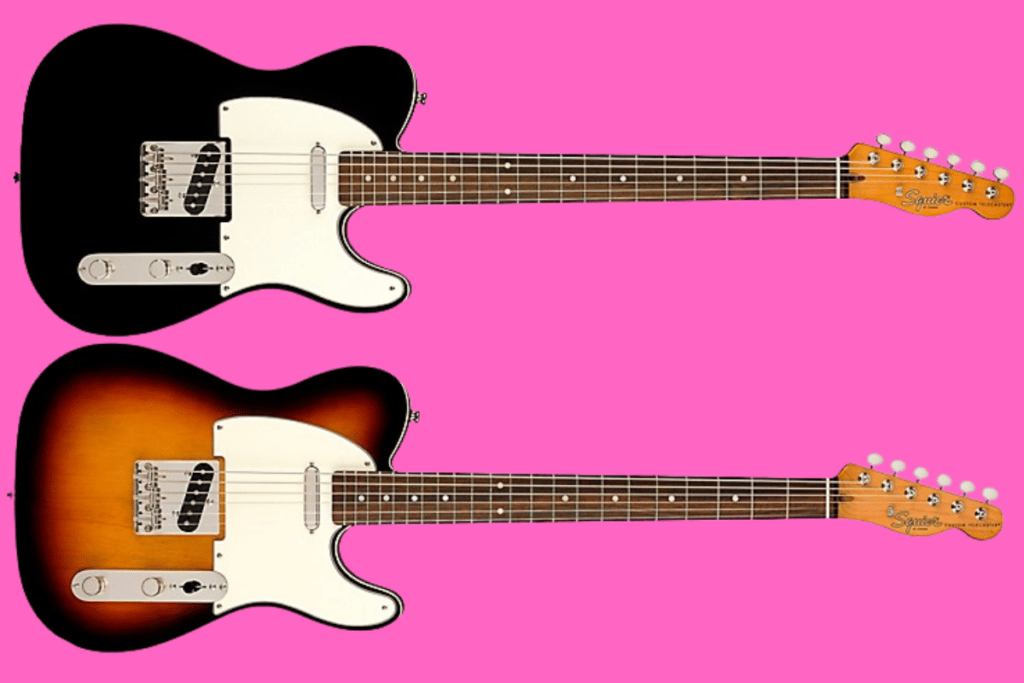Dive into the world of baritone guitar tuning with our comprehensive guide, and learn how to master this unique type of guitar to up your tone-game with some serious low-end rumble…
If you’re looking for a new sound and you’ve already messed around with alternate tunings and maybe 7 and 8-string guitars, perhaps it is time to try out a baritone guitar?
Sonically, there really isn’t anything else quite like a baritone guitar and, while playing one might take a bit of getting used to, the end result – meaning, the tonal sounds you can create with one – is well worth the effort.
Additional Resources:
If you’re looking to buy a baritone guitar and you want to play metal or heavier music, check out our guide below (it covers all the best baritone-style guitars for metal right now)
In this article, we’ll delve into the world of baritone guitar tuning, discussing its history, tuning methods, and frequently asked questions. By the end, you’ll be well-equipped to tackle this unique instrument and unleash your creativity in a whole new way.
A Brief History of the Baritone Guitar

Origins and Evolution
The baritone guitar first came into existence in the late 1950s, with the Danelectro company leading the charge. This new type of guitar was designed to bridge the gap between standard guitars and bass guitars, providing musicians with a wider range of tonal possibilities. Over the years, the baritone guitar has been embraced by a variety of genres, from jazz and country to rock and metal.
Famous Baritone Guitar Players
Several notable musicians have incorporated the baritone guitar into their repertoire, including:
- Duane Eddy: Known as the “King of Twang,” Eddy popularized the baritone guitar with his signature instrumental hits in the late 1950s and early 1960s.
- Brian Wilson: The Beach Boys’ mastermind frequently used a baritone guitar to achieve the distinctive sound on some of their most iconic hits.
- Pat Metheny: This renowned jazz guitarist has often employed a baritone guitar to explore new sonic landscapes in his compositions.
Tuning Your Baritone Guitar
Standard Baritone Guitar Tuning
The most common baritone guitar tuning is B-E-A-D-F#-B, which is essentially the same as standard guitar tuning (E-A-D-G-B-E) but shifted down a perfect fourth. This tuning maintains the same interval relationships between strings, making it relatively easy for guitarists to transition from a standard guitar.
Alternative Tuning Options
While the standard baritone guitar tuning is the most popular, there are several alternative tunings you can experiment with to achieve a unique sound:
- C-G-D-A-E-C: This tuning shifts the strings up a whole step from the standard baritone tuning, offering a higher pitch while still maintaining the baritone guitar’s characteristic depth.
- A-D-G-C-E-A: Also known as “baritone slack-key” tuning, this option provides a more open and resonant sound, perfect for fingerstyle playing.
- Drop A: By tuning the lowest string down a whole step to A, you’ll create a heavy, powerful sound that’s perfect for metal and other aggressive genres.
Tips and Techniques for Baritone Guitar Playing

Playing with a Pick vs. Fingerstyle
Whether you prefer using a pick or playing fingerstyle, the baritone guitar offers ample opportunities to develop your technique. Fingerstyle players may find the lower string tension particularly conducive to intricate picking patterns, while those who use a pick can take advantage of the instrument’s powerful, resonant sound.
Baritone Guitar VS 7/8 String Guitar?
Typical baritone guitar tuning is very similar to using a 7 string guitar, since you have the low B string on a baritone. Some players that tried 7 string guitars, end up preferring a baritone guitar instead.
This has been a recent trend in heavier genres of music, since many players like lower tunings, but dislike the heft of a 7 string neck. You get the best of both worlds with a baritone guitar-the familiarity of a six string, but also the extended range of a 7 string.
Likewise, you can also get a Low F# out of a baritone guitar, just like an 8 string. Baritone guitars open all kinds of possibilities for lower tunings.
So if you have tried out other extended range guitars and just couldn’t get used to the extra strings, then baritone guitars might be worth trying out! Baritone guitar tuning can get as low as a 7 of 8 string guitar, without the extra strings.
Adapting Chords and Scales
When you first pick up a baritone guitar, you might be thrown off by the difference in tuning. However, fretboard shapes for chords and scales remain the same, meaning you can simply shift your finger placements to account for the lower pitch.
This can open up new harmonic possibilities and inspire fresh ideas in your songwriting.
For heavier music, notably doom or drone metal, a baritone guitar will quickly start paying dividends with its lower resonance and massive tonal qualities. Bottom line? Baritone guitars are amazing for thick, heavy music, so if that’s your bag you should definitely check one out.
And the best part? You don’t even need to pay much for a quality one – this Squier Classic Vibe Baritone Telecaster Custom is utterly outstanding and it retails for hardly anything at all. Perfect for dipping your toes in the sultry waters of baritone guitars…


Leave a Reply